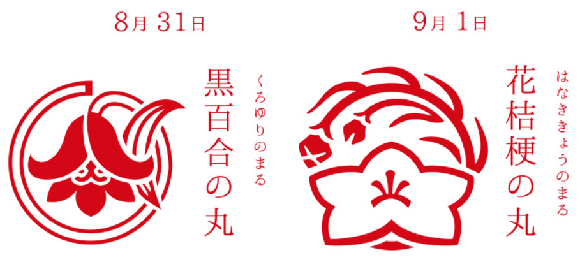
Full array of 366 hana komon, each with its own associated meaning and symbolism, is on offer.
Back in Japan’s feudal era, it was common for samurai to have a familial crest, similar to medieval knights’ coats of arms. If you’re reading this, you were born a few centuries too late to pledge you loyalty to a samurai clan, but you can still proudly use a hana komon, Japan’s floral crests that correspond to your birthday.
We took a look at hana komon a while back, but they’re now back in our thoughts and desires again. The company Hankozu specializes in hanko (the stamp-like personal seals used in Japan instead of signatures on legal documents) and has expanded its offerings to include personalized hana komon hanko featuring the owner’s name and floral crest.
If you’re unsure of what your hana komon is, Hankozu website has a search function that will pull yours up for you here. Simply scroll down until you see the drop-down menus and select the month (月) and day (日) of your birth, then click the red button marked 花個紋を探す (“Search for hana komon”).
▼ Hana komon for January 1
The results will show you your crest and the name of the flower, as well as its associated meaning and a description of the expected personality of a person born with this crest. The hana komon for August 31, for example, is the fritillaria lily, symbolizing a quest of yearning. Those with this hana komon are said to possess a mystical charm and gift for insight that allows them to read other’s emotions, as well as a fine sense of humor. Meanwhile, the hana komon for those born on September 1 is the bellfower, representing purity and cleanliness, and those born with it are unpretentious and pure-hearted,
▼ Hana komon for August 31 (left) and September 1 (right)
While Hankozu’s floral crest hanko are vaguely circular, a notable feature is that they don’t have a closed circle encompassing the entire design, unlike almost all other manufacturers’ personal seals. Customers can choose between one of three fonts with varying degrees of brush stroke-style flair.
You also have your choice of materials. Hanko with rubber stamp surfaces are priced at 4,000 yen (US$36), while those with wood stamps are just a little more at 5,000 yen. A two-hanko package, with the same design on both a rubber and wooden stamp, is also available for 9,000 yen).
▼ One-stamp orders come in tubes, while the double-pack ships in a box.
All orders include a large card explaining your hana komon (as even the average Japanese person doesn’t have an in-depth knowledge hana komon symbolism) as well as a booklet containing illustrations of all 366 crests.
▼ And yes, there’s one for Leap Day: the five-pointed shortia.
Orders can be placed through Hankozu’s online Rakuten shop (rubber stamps here, wooden stamps here, and combo packs here). While hanko aren’t legally binding outside of Japan, the elegant design and personal nature of these hana komon hanko make them ideal gifts, as well as a unique way to sign personal correspondence or greeting cards.
Source: PR Times, Hankozu
Top image: Hankozu (edited by SoraNews24)
Insert images: PR Times, Hankozu (edited by SoraNews24)
[ Read in Japanese ]

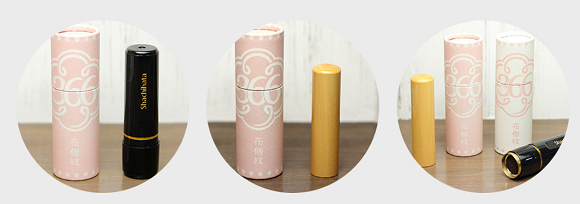
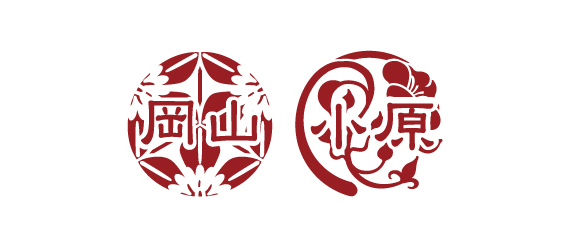
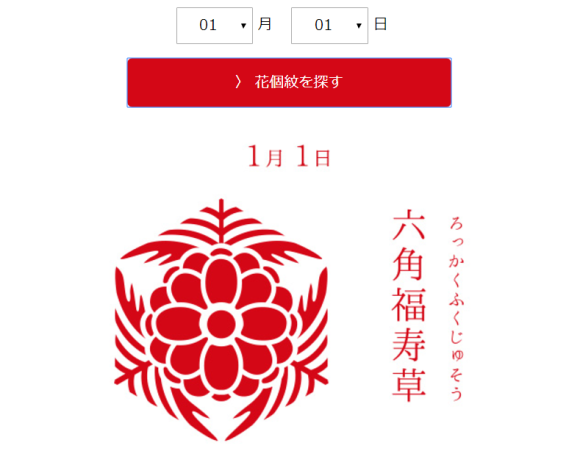
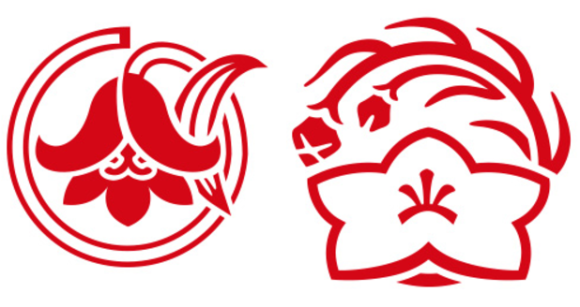
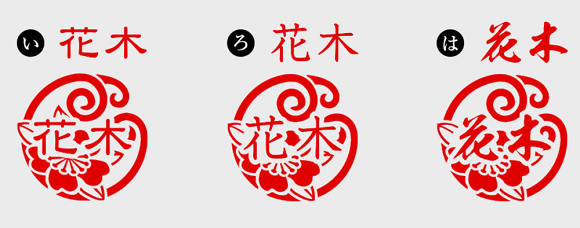
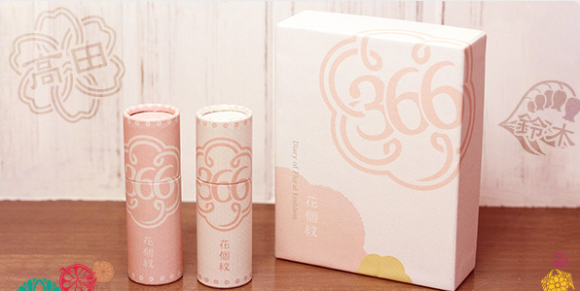
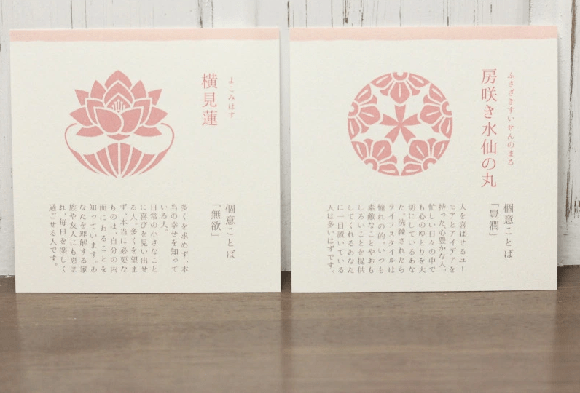
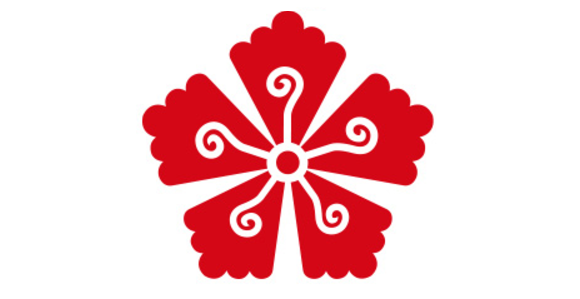
 Dogs keep pace with their feline rivals in Japan with a line of pooch-themed personal seals
Dogs keep pace with their feline rivals in Japan with a line of pooch-themed personal seals Hana Komon: Japan’s beautiful, samurai-style floral birthday crests
Hana Komon: Japan’s beautiful, samurai-style floral birthday crests Is Japan’s combination personal cat stamp/pen/mechanical pencil the best writing instrument ever?
Is Japan’s combination personal cat stamp/pen/mechanical pencil the best writing instrument ever? Pikachu can now be part of your legal signature in Japan thanks to awesome Pokémon personal seals
Pikachu can now be part of your legal signature in Japan thanks to awesome Pokémon personal seals Sailor Moon’s Moon Rod and Moon Stick cases will keep your personal seal stable and stylish
Sailor Moon’s Moon Rod and Moon Stick cases will keep your personal seal stable and stylish Hayao Miyazaki says Happy New Year to Studio Ghibli fans with new art for Year of the Horse
Hayao Miyazaki says Happy New Year to Studio Ghibli fans with new art for Year of the Horse That time Seiji called JASRAC to ask why he didn’t get paid royalties for his song being on TV
That time Seiji called JASRAC to ask why he didn’t get paid royalties for his song being on TV Master Japanese brush makers collaborate with Peanuts for limited edition makeup brush series
Master Japanese brush makers collaborate with Peanuts for limited edition makeup brush series Draw like a Studio Ghibli anime artist with exclusive watercolour set approved by Hayao Miyazaki
Draw like a Studio Ghibli anime artist with exclusive watercolour set approved by Hayao Miyazaki Japanese group to hold fashion show of colostomy bags and other stoma equipment in Paris
Japanese group to hold fashion show of colostomy bags and other stoma equipment in Paris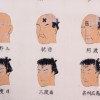 Criminals of Japan’s Edo Period Were Often Punished by Getting Face Tattoos
Criminals of Japan’s Edo Period Were Often Punished by Getting Face Tattoos Foreign tourist comes to Japan hoping to see yakuza from Yakuza video game series
Foreign tourist comes to Japan hoping to see yakuza from Yakuza video game series W.T.F. Japan: Top 5 kanji with ironic meanings【Weird Top Five】
W.T.F. Japan: Top 5 kanji with ironic meanings【Weird Top Five】 Starbucks Japan releases new zodiac chilled cup drink for 2026
Starbucks Japan releases new zodiac chilled cup drink for 2026 Hello Kitty Choco Egg figures are an adorable trip through three periods of Japanese pop culture【Pics】
Hello Kitty Choco Egg figures are an adorable trip through three periods of Japanese pop culture【Pics】 Starbucks Japan ready to get Year of the Horse started with adorable drinkware and plushies【Pics】
Starbucks Japan ready to get Year of the Horse started with adorable drinkware and plushies【Pics】 Cyberpunk anime meets traditional culture in Ghost in the Shell gold leaf Japanese changing screens
Cyberpunk anime meets traditional culture in Ghost in the Shell gold leaf Japanese changing screens 7 great places to see Mt. Fuji from without having to climb it
7 great places to see Mt. Fuji from without having to climb it 7-Eleven Japan’s ramen-cooking robot whipped us up a bowl of noodles【Taste test】
7-Eleven Japan’s ramen-cooking robot whipped us up a bowl of noodles【Taste test】 We found possibly the quietest Japanese-style hotel in Tokyo’s bustling Shinjuku district
We found possibly the quietest Japanese-style hotel in Tokyo’s bustling Shinjuku district Japan’s otoshidama tradition of giving kids money at New Year’s gets a social welfare upgrade
Japan’s otoshidama tradition of giving kids money at New Year’s gets a social welfare upgrade Sumo Sanrio! Hello Kitty and pals team up with Japan Sumo Association for new merch【Pics】
Sumo Sanrio! Hello Kitty and pals team up with Japan Sumo Association for new merch【Pics】 More Than a Capsule Stay: Why Solo Travelers Choose “global cabin Yokohama Chinatown”
More Than a Capsule Stay: Why Solo Travelers Choose “global cabin Yokohama Chinatown” Japan’s oldest largetooth sawfish in captivity back on display in Mie Prefecture
Japan’s oldest largetooth sawfish in captivity back on display in Mie Prefecture 7-Eleven Japan starts new temporary luggage storage service in over 300 branches
7-Eleven Japan starts new temporary luggage storage service in over 300 branches Disillusionment at Tsukiji’s tourist-target prices led us to a great ramen restaurant in Tokyo
Disillusionment at Tsukiji’s tourist-target prices led us to a great ramen restaurant in Tokyo Starbucks teams up with 166-year-old Kyoto doll maker for Year of the Horse decorations【Photos】
Starbucks teams up with 166-year-old Kyoto doll maker for Year of the Horse decorations【Photos】 Tokyo considering law requiring more trash cans following litter increase in heavily touristed area
Tokyo considering law requiring more trash cans following litter increase in heavily touristed area Tokyo’s Tsukiji sushi neighborhood asks tour groups to stay away for the rest of the month
Tokyo’s Tsukiji sushi neighborhood asks tour groups to stay away for the rest of the month Tokyo event lets you travel back in time, for free, to celebrate 100 years since Showa era start
Tokyo event lets you travel back in time, for free, to celebrate 100 years since Showa era start Sanrio theme park in Japan announces plans to expand into a Sanrio resort
Sanrio theme park in Japan announces plans to expand into a Sanrio resort Japan may add Japanese language proficiency, lifestyle classes to permanent foreign resident requirements
Japan may add Japanese language proficiency, lifestyle classes to permanent foreign resident requirements Stamina-destroying “Paralysis Noodles” are Tokyo’s newest over-the-top ramen innovation
Stamina-destroying “Paralysis Noodles” are Tokyo’s newest over-the-top ramen innovation Survey asks foreign tourists what bothered them in Japan, more than half gave same answer
Survey asks foreign tourists what bothered them in Japan, more than half gave same answer Japan’s human washing machines will go on sale to general public, demos to be held in Tokyo
Japan’s human washing machines will go on sale to general public, demos to be held in Tokyo Japan’s deadliest food claims more victims, but why do people keep eating it for New Year’s?
Japan’s deadliest food claims more victims, but why do people keep eating it for New Year’s? We deeply regret going into this tunnel on our walk in the mountains of Japan
We deeply regret going into this tunnel on our walk in the mountains of Japan Studio Ghibli releases Kodama forest spirits from Princess Mononoke to light up your home
Studio Ghibli releases Kodama forest spirits from Princess Mononoke to light up your home Major Japanese hotel chain says reservations via overseas booking sites may not be valid
Major Japanese hotel chain says reservations via overseas booking sites may not be valid Put sesame oil in your coffee? Japanese maker says it’s the best way to start your day【Taste test】
Put sesame oil in your coffee? Japanese maker says it’s the best way to start your day【Taste test】 No more using real katana for tourism activities, Japan’s National Police Agency says
No more using real katana for tourism activities, Japan’s National Police Agency says Starbucks Japan reveals new sakura drinkware collection, inspired by evening cherry blossoms
Starbucks Japan reveals new sakura drinkware collection, inspired by evening cherry blossoms Updated cherry blossom forecast shows extra-long sakura season for Japan this year
Updated cherry blossom forecast shows extra-long sakura season for Japan this year Tokyo temple holds funeral for personal seals in effort to reform outdated business practice【Vid】
Tokyo temple holds funeral for personal seals in effort to reform outdated business practice【Vid】 Gundam can now be part of your signature in Japan with Mobile Suit Gundam personal seals【Photos】
Gundam can now be part of your signature in Japan with Mobile Suit Gundam personal seals【Photos】 Online shop’s anime character personal seals look awesome, can be used for legal paperwork
Online shop’s anime character personal seals look awesome, can be used for legal paperwork Japan’s new ukiyo-e woodblock print passports are beautiful, now in travelers’ hands【Photos】
Japan’s new ukiyo-e woodblock print passports are beautiful, now in travelers’ hands【Photos】
Leave a Reply